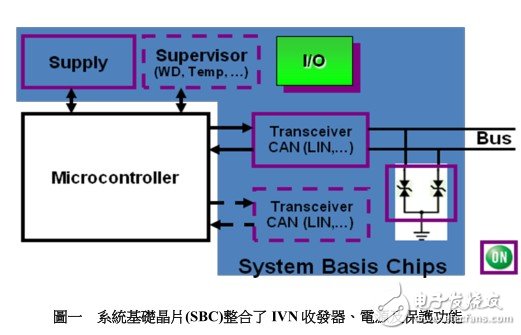The transition from traditional automotive point-to-point wiring to the use of industry-standard in-vehicle networks (IVN) has enabled automakers to add numerous new electronic functions to optimize comfort, convenience, and infotainment systems, optimize chassis and powertrain control, and Electrify various subsystems to save costs and reduce weight.
Multiple in-vehicle networks using different protocols coexist in the same car and can support the connection of a large number of nodes. In the early 2000s, there may be only a few network nodes in a typical car. Now the number has increased to more than twenty, and the number of network nodes of some high-end luxury models today may exceed 100. Factors causing this rapid increase in the number of nodes include the use of electronically controlled lighting such as LED bulbs in automotive interior and exterior applications, and the use of advanced driver assistance systems (ADAS), such as collision avoidance and pedestrian recognition.
Another factor to consider is the effect of hybrid electric vehicles (HEV) and micro-hybrid technology; the integration of energy recovery devices and electronic traction systems in HEVs has further increased the demand for connectivity in automobiles.
Multiple buses, more nodes
Several different busbars and various protocols are commonly used in automobiles to meet the different needs of body electronic systems, power system controllers, infotainment systems, and safety-oriented electronic functions. The industry standards involved include Area Interconnection Network (LIN) and SAE J2602, Controller Area Network (CAN) and FlexRay.
Higher bandwidth signals, such as the camera feed signal mounted on the body, may be distributed using the 24.8 Mbps Media Guided System Transmission (MOST) standard or the IDB-1394 (gas FireWire) standard operating at 800 Mbps. Automotive Ethernet will also be a function of automobiles in the future to match high data rate applications and serve as a backbone network connecting different functional subnets.
LIN supports data rates up to 20 kbps, which is sufficient to control a large number of body electronics applications, such as window regulators, rearview mirrors and headlight regulators, seat position adjustment mechanisms, and other motors, pumps and fans. LIN supports simple command / confirmation communication; intelligent subsystems such as electromechanical modules are responsible for generating the required motor drive waveforms [ more details ]

Featuring level VI energy efficiency and meet IEC/EN/UL 62368 safety standards, the external universal Power Adapter accepts universal input voltage 100VAC to 240VAC and provides 3 Years warranty. These 61 W to 75 W series power adapters use ABS+PC flame retardant material housing, all materials conform to the international environment protection standard. Protections for over voltage, over current and short circuit are also included.
Switching Power Adapter,230V To 12V Adaptor,RoHS AC Adapter,Led Adapter,Power Adaptor,UL Listed Adaptor
Shenzhenshi Zhenhuan Electronic Co Ltd , https://www.szzhpower.com
